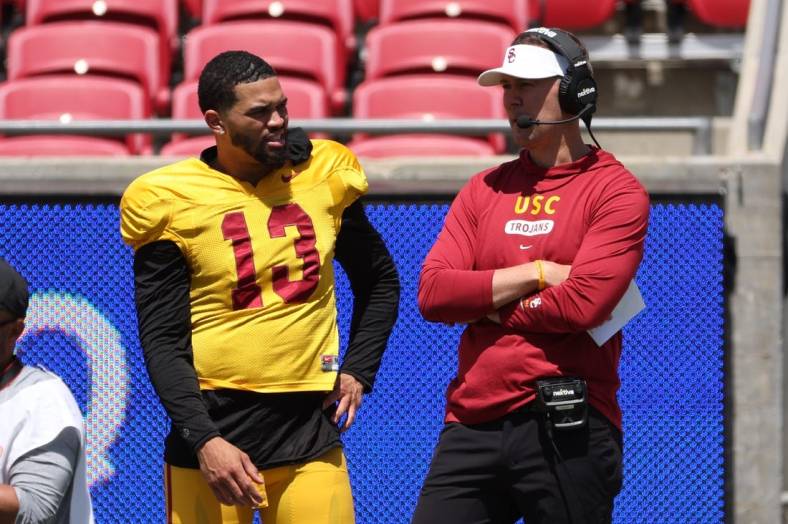
INDIANAPOLIS — Agent-less quarterbacks are an anomaly in the NFL, but Southern California’s Caleb Williams turned pro with the intent of not hiring the typical certified player representative.
With contracts for draft picks slotted for length and salary terms under the Collective Bargaining Agreement, Williams would be left with only peripheral details to iron out with his first football employer after the 2024 NFL Draft in April. Offset language, which boils down to the responsibility to pay for a draft pick who is released but signs with another team, has been a sticking point in some negotiations but one NFL personnel director said the contractual elements in play are “not abundantly complex because they’re based on league guardrails, limits and precedent” for top draft picks.
With no conduit between team and player, the dynamic changes significantly in negotiations with free agents.
Ravens general manager Eric DeCosta negotiated two landmark agreements with two marquee self-represented free agents in 2023. Baltimore signed linebacker Roquan Smith to a five-year, $100 million contract and quarterback Lamar Jackson to a five-year, $260 million contract. DeCosta and the Ravens applied the franchise tag to Jackson just over a year ago, and admitted there was potential for talks to get sticky when negotiating directly with players.
“When you deal with an agent, sometimes you’re able to speak very freely — position yourself a certain way. You have different arguments that you can use that maybe you wouldn’t say to a player. So, I think that’s part of it,” DeCosta said.
Williams is not working out with quarterbacks at Lucas Oil Stadium on Saturday but will hold a pro day in March. He is scheduled to hold a press conference Friday morning.
Widely regarded as the presumptive No. 1 overall pick, Williams spoke on the record for the first time about his potential landing spots in an ESPN interview on Tuesday.
Another question that has been underplayed to date is whether teams are confident in Williams’ size. Listed at 6-foot-1, he’s not the traditional prototype at the position. Will his height be important to the Bears and Washington Commanders, who are in the QB market and have the No. 2 pick in the draft?
It depends on the buyer. Bryce Young, drafted No. 1 by the Carolina Panthers last April, measured 5-10 1/8, 204 pounds at the combine. Kyler Murray was the top pick in the 2019 draft, but the Arizona Cardinals’ quarterback is the same height as Young.
Broncos head coach Sean Payton coached undersized Super Bowl-winning quarterbacks Drew Brees in New Orleans and Russell Wilson in Denver last season and said 6-2 is the baseline starting point for some NFL teams.
“Are you drafting prototype with the first pick of the draft? Some places I’ve been where you just have to be and that’s one of those that varies per team, per organization,” Payton said, adding that the Young-C.J. Stroud debate is “not new. The Manning-Leaf debate that goes back. There’s a lot of reports torn up after that selection process. And so it repeats itself and you really want to turn over the stones. And this is for me where analytics really comes into play a lot in the procurement of player.”
–Field Level Media